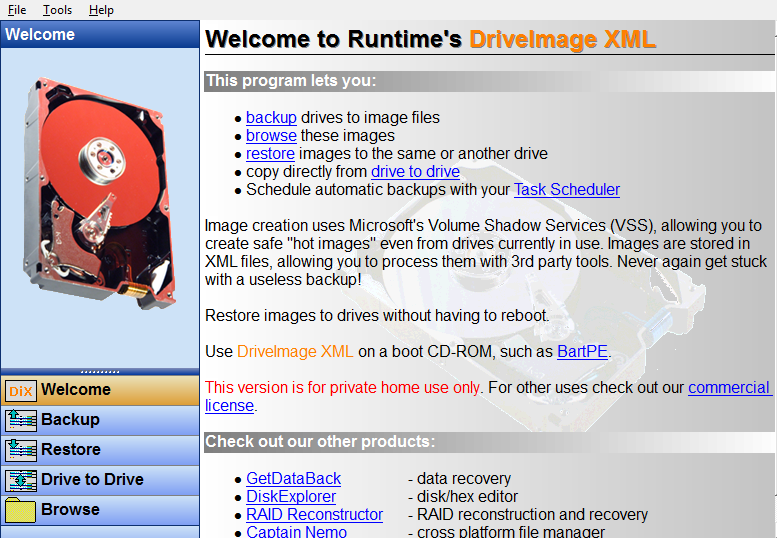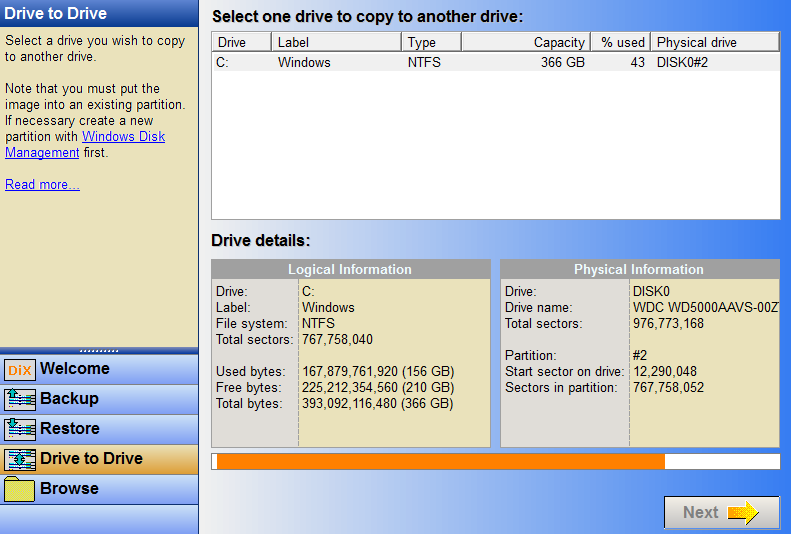| Nós nos esforçamos para localizar nosso site em tantas línguas quanto possível, no entanto esta página está traduzido usando o Google Translate máquina. | perto |
-
-
produtos
-
recursos
-
suporte
-
empresa
-
-
Página Principal
-
Recursos
- Blogue
- A clonagem de um disco rígido da Easy WayCloning a Hard Drive the Easy Way
A clonagem de um disco rígido da Easy WayCloning a Hard Drive the Easy Way
Por Steve Horton Abril 01, 2013clone drive, hard drive, solid state driveNo CommentsClonar um disco rígido é simplesmente colocar todo o conteúdo de um disco rígido em outro – como copiar e colar, exceto em uma escala muito maior do que isso. É um processo útil se você deseja comprar um novo disco rígido para o seu computador e deseja copiar o seu sistema operacional e todos os arquivos.
Por que clonar uma unidade?
Por que você quer clonar uma unidade? O motivo mais comum é passar de um disco rígido tradicional para um drive de estado sólido, porque os SSDs são muito mais rápidos e confiáveis.
A primeira coisa que você vai querer fazer é colocar a segunda unidade no seu computador. Um disco rígido externo USB (não uma unidade flash) ou um disco rígido SATA normal instalado, abrindo a máquina e instalando-a. Colocar em uma segunda unidade pode ser um pouco complicado. Dê uma olhada neste artigo para mais sobre este assunto.
O que eu uso para clonar uma unidade?
Em seguida, você vai querer usar um programa que permitirá que você faça isso – para simplificar, usaremos o XML do DriveImage para este tutorial.

É assim que o programa se parece quando você inicializa. Clique no ícone de drive a drive.Termos do disco rígido
Primeiramente, você verá muitos termos com os quais não está familiarizado. Tente não se preocupar.
Aspectos dos discos rígidos que você precisa aprender incluem tabelas de partição, partições, setores, faixas e sistemas de arquivos.
As tabelas de partição – também chamadas de Master Boot Records – residem no início de cada unidade e apontam para cada partição na unidade, onde os arquivos residem.
As próprias partições são o que o sistema operacional vê como uma unidade – várias partições em um único disco rígido podem permitir que diferentes sistemas operacionais e sistemas de arquivos sejam instalados em diferentes partições.
As trilhas são círculos circulando pelo disco, armazenando dados e setores são partes menores de trilhas, armazenando partes menores de dados.
Sistemas de arquivos são o que seu sistema operacional usa para classificar os arquivos que você tem, com sistemas de arquivos populares, incluindo FAT32 (usado pela maioria dos cartões SD) e NTFS, que é usado pelo Windows para suas partições.
Os passos fáceis para clonar uma unidade
Para clonar uma unidade, você precisará ter a nova unidade onde todos esses dados estão indo dentro do seu computador. A unidade que você está usando no momento será identificada como C: – qualquer letra que seu computador nomeie sua nova unidade é onde você vai clonar a unidade antiga. Certifique-se de que você não tem uma unidade flash ou cartão SD conectado neste momento – o computador não consegue inicializar o Windows a partir deles e você não deseja selecioná-los acidentalmente no menu ao selecionar a opção nova unidade para a migração dos seus dados.

Depois disso, clone sua unidade C: em seu novo disco rígido.Além disso, lembre-se de que você não poderá usar o mesmo Windows na unidade antiga e na nova unidade simultaneamente. A Microsoft permite apenas uma licença por PC.
Uma nota final: se a sua nova unidade for menor que a anterior, você precisará fazer backup e excluir arquivos da primeira unidade para reduzi-los primeiro em tamanho, antes de clonar.
Aproveite a sua unidade clonada!
Was this post helpful?YesNoLivre Atualizações de Driver
Atualize seus drivers em menos de 2 minutos para aproveitar melhor desempenho do PC - Livre.
Livre Atualizações de Driver
Atualize seus drivers em menos de 2 minutos para aproveitar melhor
desempenho do PC - Livre.
Não encontrou sua resposta?Faça uma pergunta para a nossa comunidade de especialistas de todo o mundo e receber uma resposta em nenhum momento a todos.most relevant artigos recentes Empresa| Sócios| EULA| Informações Legais| Não venda/compartilhe minhas informações| Gerenciar meus cookiesCopyright © 2026 Corel Corporation. Todos os direitos reservados. Termos de uso | Privacidade | CookiesFixe no Pinterest
-